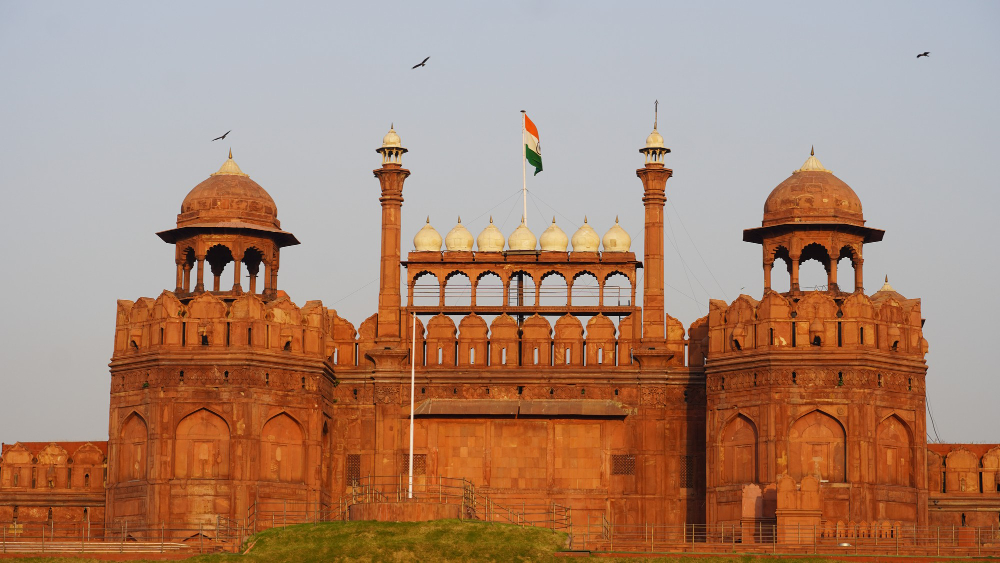Indian flags were flying everywhere in India on August 15, 2022, in honour of the country’s platinum jubilee. There has been continuous improvement in the financial environment in India, which is demonstrated by how commerce and inventions have altered the nation. India has paved the way for itself to one day become a superpower. Pandit Jawaharlal Nehru gave an inspirational address on August 15, 1947, which is now 75 years ago. As we reflect, we see a wonderful past where we built great things from nothing.
India’s economy is expanding quickly, and in order for this expansion to continue quickly, a stable and reliable financial system is required. A country that dealt with Covid in a proactive manner has demonstrated a significant economic recovery. The country is a rising contender and a favourite for foreign direct investments. In the past, there has been an upward trend in FDI inflow. An essential component of a nation’s economy is its financial environment. The financial environment in India has undergone a significant transformation in recent years.
The establishment of numerous large- and small-scale industries during the past few years has significantly impacted the nation’s economy. The Indian government has supported industry, which has had a positive effect on the nation’s economy. After 75 years, there has been a good shift in India’s financial landscape.

What is a Financial Environment?
One of the most critical aspects of an economy is the financial environment. It is a component of the economy, which is made up of important institutions, businesses, investors, and markets. The primary players influence an economy’s financial environment. A robust economic environment is a good representation of an advanced economy.
Key Players in Financial Environment
1. Financial Managers
A company’s most important player is its financial managers. The financial managers are responsible for raising capital and investing it. Financial managers are accountable for the investment of funds. Financial management or managing finance refers to the financial choices made by a financial manager.
They are supposed to make financial judgments, assess the risks, and determine the firm’s maximum gain. Financial managers’ choices should be made in a way that will make shareholders wealthy.
2. Investors
Investors have a significant role in a healthy financial system. Investors have an abundance of money available to lend to borrowers like businesses, institutions, or governmental organisations. Individual or institutional investors both qualify as investors. Individual investors make up the first type of investors, lending money to smaller investors by acquiring their assets or securities (equity shares or debt securities). Institutional investors fall under the second group of investors (financial institutions). Loans are the main focus of financial firms.
3. Financial Markets
The financial market is a market that aids in controlling the movement of money between lenders and investors. In a financial market between investors and borrowers—also known as demand and supply—financial securities, commodities, and other fungible goods are exchanged. The term “financial markets” refers to a system of controlled marketplaces where commodities are traded between investors and borrowers at transparent prices, expenses, and fees. Financial markets are a structure for exchanging financial assets that is organised and automated. Two criteria are used to evaluate the financial markets:
A. Capital Markets
a marketplace where buyers and sellers trade financial instruments, such as stocks and bonds. Participants in the buying and selling operations include both individuals and institutions. Equity markets and debt markets are the two types of capital markets.
The equity market is where stocks are sold. Companies engage in the sale of stocks to investors. In the equities markets, the prices of securities are extremely volatile. Whereas the debt market refers to the process by which businesses acquire debt from private or institutional investors.
B. Money markets
Securities are exchanged for a brief period of time in the money markets. The money markets are where securities like certificates of deposits, commercial paper, treasury bills, bankers acceptances, etc. are traded. Securities bought and sold have a one-year minimum maturity period.
C. Foreign Exchange Market
The world’s most thriving market is the foreign exchange market. The exchange of money is completed based on the current exchange rate. In the foreign exchange market, rates are dealt with using a multi-currency system.
D. Credit Market
A credit market is a place where different banks and other financial and non-financial institutions lend money to people and organisations.
4. Financial Instruments
In the financial markets, financial instruments are traded securities. These financial instruments can take the form of cash, an ownership stake, or a contract granting the right to pay or receive money. There are two ways to evaluate financial instruments: –
A. Cash Instruments
The value of securities is determined by the market. Cash instruments are defined as securities that are directly determined, such as loans and deposits.
B. Derivative Instruments
Derivative instruments are defined as securities determined by the market, such as forward, options, and swap.
5. Financial Institutions
Financial institutions act as a bridge between the investor and the borrowers. Financial markets are used to either directly or indirectly mobilise investors’ savings.
What are the functions of Financial Institutions?
- It helps turn hazardous investments into risk-free investments.
- A short-term investment liability could become a long-term investment.
The best illustration of a financial institution is a bank. People with extra cash deposit it in savings accounts, and others in precarious positions take out loans. The banks act as a middleman in this situation between the two.

Positive Change in the Financial Environment in India
Currently, the majority of Indians own smartphones, have completed their eKYC, are able to apply for loans, order groceries and other goods online, and create bank accounts. India’s financial landscape has substantially transformed since previous years. Customers are offered digitally. A significant portion of the Indian financial sector comprises commercial banks, mutual funds, technology firms, and payment banks.
Financial Institutions
1. Banks
The financial sector in India is led by commercial banks. Banks control the majority of the financial sector’s market share. They report that 64% of their assets are protected by a variety of financial services. The transition of banks from a physical to a digital banking system is the most advantageous transformation in banking. For the benefit of the Indian populace, the financial system has acquired cutting-edge digital technologies. The banks are making an effort to grow in the rural Midwest. The banks and banking facilities are known in rural areas.
The Indian government is making an effort to help micro, small, and medium-sized businesses (MSMEs) and small to medium-sized businesses (SMEs) lessen the effects of the pandemic. The goal of the banks is to stabilise these regions’ financial systems and help economically underdeveloped areas. Banks have made efforts to support SMEs and MSMEs financially and expedite loan disbursement to SMEs and MSMEs.
The banks have reevaluated their strategies and vigorously implemented the new operations to benefit the financial industry and to contact clients easily in response to the epidemic and the challenging circumstances the financial sector has been experiencing for years. The barriers to banking between rural and urban areas have been eliminated thanks to the actions done by banks.
2. Non-Banking Financial Companies (NBFCs)
There are approximately 9,500 NBFCs registered, according to RBI. Financial assistance and the development of financial inclusion for all are the NBFCs’ main responsibilities.
NBFCs have focused their attention in particular on the populace in rural areas. The NBFCs are essential in helping SMEs and MSMEs with their financial needs. The core of the Indian economy is made up of SMEs and MSMEs. The NBFC has a diverse and extensive clientele, which has contributed to a sizable increase in credit. Due to poor credit scores or missing documentation, a sizable portion of the Indian population has trouble getting loans approved by financial institutions.
The NBFCs have emerged as the ideal source of financial assistance for those who are experiencing financial difficulties. In upcoming years, the NBFCs As we enter the new year, NBFCs have the potential to outperform conventional loan lending institutions and establish themselves as a leading loan lending facilitator.
3. Payment Banks
The people of India are able to enjoy financial freedom thanks to the new concept of revolutionary payment banks. By adopting and reviewing regulations to encourage financial incorporation, the RBI significantly contributed to the launch of the payments banks. The RBI encouraged the concept of a payments bank by approving the cashless digital banking campaign as a solution to the issue of people’s limited ability to contribute to the financial industry.
The RBI had to make an effort to control the spread of banking technology in rural areas. In order to stop rural communities from being excluded from banking technology, the RBI established a payments bank to educate and provide financial support to SMEs and MSMEs in rural areas. The RBI has stated that the maximum balance per user should range between 1 lakh and 2 lakh rupees in order to accommodate the needs of MSMEs, SMEs, small dealers, and consumers. The RBI oversees a number of initiatives, including:-
- Pradhan Mantri Jan Dhan Yojna
- Cashless payments through applications
- Electronic fund transfer mechanisms like RTGS and NEFT
- Digital India campaign
4. Other Co-operatives Banks
The largest financial network in the world is India’s cooperative system. 230 million people have been a part of the cooperative system since the Co-operative Society Act was passed in 1904. The cooperative societies contribute significantly to the expansion of the agriculture industry by providing strategic inputs. Cooperative societies work hard every day to satisfy customer needs and meet their demands at a low cost. By offering financial assistance to farmers, cooperative organisations play a crucial part in meeting their needs for irrigation systems and energy. In recent years, cooperative societies have expanded to support the financial industry and have produced good changes that have improved the financial industry.
Startups
A fintech startup is a business that uses technology to address issues with financial management. These fintech startups provide organisations with improved financial services through the use of software and other cutting-edge technology. Around the world, India’s fintech (financial technology) industry is expanding quickly. According to a report, India’s fintech market will be worth over 160 billion dollars by 2025. The pandemic’s impact on the fintech market was less severe than it was in other industries. The fintech industry did better during the pandemic than it did financially. 33 Indian fintech startups completed almost agreements totalling $647 million.
Insurance Companies
The insurance sector was severely impacted by the pandemic. Since the previous year, the Insurance Regulatory and Development Authority of India (IRDAI) has changed the entire insurance process to give customers a comfortable aid. 1.7% of the global insurance market is in India.
The development of the insurance sector in India has benefited greatly from digitalization. The fear of insurance increased among Indians as a result of the large number of pandemic-related deaths that were recorded. By progressing in digital documentation such as e-KYC or video-KYC rather than outdated physical documentation, the IRDAI has made an attempt to increase the penetration of insurance. The collecting of premiums has grown dramatically for insurance firms. In an effort to reduce fraud, the IRDAI has improved its fraud management system.
Mutual Funds and Other Markets
According to the Securities and Exchange Board of India (SEBI), the Indian financial sector’s mutual fund category has experienced remarkable expansion over the past few years. Customers in India now have simple access to invest in mutual funds and the stock market thanks to digital investing platforms. The mutual fund business has undergone significant growth and change. Many people are drawn to and prepared to invest in the stock market and mutual funds. The Indian financial market aids in fostering sound financial practices and economic savings. In the financial market, buyers and sellers negotiate pricing for financial items. The market’s supply and demand for various financial items is a useful variable in determining the cost of financial products.
In Summary
According to a survey by the India Brand Equity Foundation (IBEF), India is predicted to have the largest global private wealth market by 2028. The Indian government is working arduously to meet the requirements of the populace by putting new plans into place and outlining a plan to stabilise the financial system. The financial industry adopted new approaches, which improved the financial environment. In the coming years, the financial sector is expected to grow rapidly.
#indiaat75 #financialenvironment

Donald G. is the Principal Consultant at NRI Money+. He specialises in creating personalised financial plans for NRIs (Non-Resident Indians) and HNI (High Net-worth Individuals).



